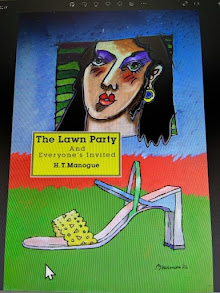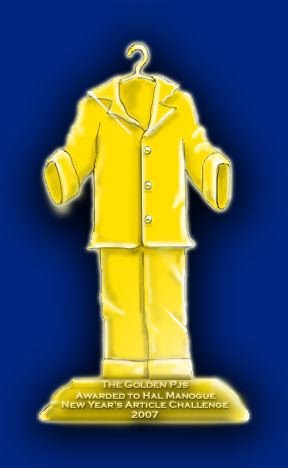You can spend the money on new housing for poor people and the homeless, or you can spend it on a football stadium or a golf course. Jello Biafra’s statement is a wake-up call that sends a buzz saw message through the minds of avant-garde religious and political leaders as well as the faithful that politely address, but then blatantly sweep the homeless issue under the carpet of economics. Sure, we do need football and golf, but we also need to reinvent the way we perceive our society. Society is a joint stock company and everyone is fully vested in its future. Everyone plays a role by fulfilling desires and creating experiences that raise awareness, and that process expands our consciousness. Homelessness is an experience that raises awareness, but we generally ignore it until it happens to someone we know or to us. Homelessness is a product of choices and those choices become a reality.
Biafra is a punk rocker and a leading figure in the Green Party, and he, in his own way, makes us pop the top on some of our deep rooted social behavior and priorities. The National Law Center on Homelessness and Poverty says that on any given night in the United States, 700,000 to 2 million people experience homelessness. Putting a face on the homeless is easy to do— they look just like any one of us. Some reports say that 7 out of 10 people are one paycheck away from being homeless. Almost everyone knows or has a friend that knows a homeless person.
No culture is immune to homelessness. About 50% of the homeless population is African-American; 35% is Caucasian; 12% is Hispanic; 2% Native American, and 1% is Asian. Single men make up about 44% of homeless population; 13% are single women; 36% are families with children, and 7% are unaccompanied minors. At least 30% of the homeless stay that way for more than 2 years, even though 44% of the homeless population works.
What is the invisible catalyst that catapults some of us into the pot holes of poverty and homelessness? Statistics show that 66% of homeless people are addicted to drugs and alcohol, and 16% are considered mentally ill. But, drugs and alcohol don’t create homelessness on their own, but they can help instigate and prolong it. Mental illness is not a major homeless catalyst either, but typecasting, misunderstanding, and then ignoring or giving up on certain mental menaces certainly can produce the experience of homelessness.
The homeless cut themselves off from mainstream society, and enter a reality filled with fear and despair. No one wants to be homeless, but some people innately expect it using a non-physical sense, and the question that everyone involved with eliminating homelessness asks is—why? One answer may be the non-physical energy that is part of the individual psyche. The non-physical psyche is always in play physically, and some of us allow it to manifest in the form of homelessness in order to experience the separation of the self physically.
No one wants to objectively experience homelessness, but they do in order to physically feel the consequences. They are contributing to the expansion of consciousness by making us aware of the contrast that exists in our fearful state of egotistical splendor. The quest for ego satisfaction in this world of dualism is the catalyst for homelessness.
The pressure to perform and to be a part of a society that considers itself a special form of consciousness, which is detached from other life forms, also contributes to homelessness. Believing we are a separate form of consciousness fuels separatism and promotes judgments. We try to control what we fear through our social structure, and the end result is our own form of homelessness.
There are several physical factors that contribute to the homeless experience. Foreclosures, addictions, eroding work opportunities, globalization, the decline in US manufacturing, erosion in the value of the minimum wage, and low-paying service sector jobs all play a role in changing our economic reality in several ways, but these factors don’t necessarily produce homelessness in everyone.
Some folks argue and say homelessness is a personal experience based on poor choices, and those unfortunate souls must figure it out their life on their own. We tend to fear the homeless; they look too much like the self we see in the mirror each day, and that’s the motivation that keeps the homeless motor percolating. A good example of that fear is on display in churches across the United States. Churches sit empty four or five days a week while the homeless sleep in conditions that are not acceptable for our house pets. Our places of worship and the groups that control them neglect to appreciate the value of homelessness when it is embraced.
There are some caring church people that give a helping hand by serving meals and donating clothes or starting a temporary shelter, but those fixes are not fixes—they are band aids that cover the potential mortal wounds of homelessness. There are government programs that also try to help the homeless by using some of the same tactics, plus educational courses are introduced into the governmental and social mix to help the homeless understand how they got where they are.
Most of the homeless know where they are and how they got there. What they need and want is to start over and experience traveling around the economic board of life in a different mental vehicle. They need the kind of help that comes from our subjective self, not the self that is dressed in egotistical splendor. One of the messages locked in the vice of homelessness is to look fear in the face, and then embrace and accept it.
We bury the subjective aspects of the self in church, and want our objective self to be accepted so we conform to certain beliefs and participate in specific rituals that make us feel a sense of unity. We block out other valid beliefs and maintain a lifestyle that is filled with faith, but this vacillating faith picks what is right and wrong based on control and fear, and we find the self sinking in a world of judgmental senselessness. The result is a mass reality that doesn’t understand the nature of the self and the energy of consciousness.
The solution to homelessness is right under our egotistical noses. We must accept them as counterparts that need a fresh start and a sense of unity. If religion is what it says it is, the faithful must open their minds and accept the homeless as aspects of the universal self. If government agencies what to help they can help establish self-contained homeless communities where the homeless can help themselves, and begin to experience physical life in another way.
A model of a homeless community exists and is brought to life in the book, Living Behind The Beauty Shop. The concept is not new; it has been forgotten and the time to remember what we all can do to turn homelessness into an understandable experience is now.
Living Behind The Beauty Shop is about a Middle Tennessee boy who understands that greater reality where the psyche is able to communicate with the self that is experiencing other dimensions. The boy, Mase Russell, is living with Down syndrome. He is considered disabled in our normal reality, but he is far more enabled and connected than we are to that stream of consciousness that flows through all of us. He is able to communicate with other aspects of the self while dreaming, and he accepts his dream experiences as real. He is even able to remember those experiences and express them in his own way. His family begins to sense that his disability is a challenging gift not a sentence of suffering.
His family is like any other family. They experience the typical dramas that we all create in our waking reality. His grandfather, Warren Russell is a wealthy business man that lives on his family’s 2000 acre farm in Leipers Fork, Tennessee. The farm was a land grant given to his triple great-grandfather after the American Revolution. Warren and his wife Claire considered the farm their right of passage until they both experienced a near-death experience on a trip to Florida in their Cessna. After the accident Warren decides to donate 1000 acres to a non-profit foundation he formed called Perception Farms. Perception Farms is a self-sufficient community off the grid that gives the homeless a fresh start.
His daughter Cindy realizes that she’s gay after she marries her college sweetheart. She returns home from California and finds an ex-nun, who is now called Margie, at one of Perception Farm’s fundraisers. Margie discovered her true sexuality when she was in the convent. They become partners and decide to have a child using the sperm of their friend Alan Sutton, a well educated and athletic individual who works in the shoe business. Baby Mase is born with DS and the story follows his life and the experiences of the family as he becomes an accomplished poet and artist.
Years later, Mase finds Mischa Eddington who is another Down syndrome artist, in a local college art class, and they develop a close relationship. Together they watch members of the family experience the pains of getting older. They offer the family another perspective about that aging process. The family realizes that Mase and Mischa chose to be born with Down syndrome in order to help others see that there are no boundaries or limits in physical life unless we put them there through our beliefs and perceptions. They show us that other realities are just as real as our waking reality.
When we consider that consciousness does not have a beginning or an end in the non-physical world we can better understand that the people we call disabled or homeless are actually teachers who choose to experience life in extraordinary ways. They teach us that putting limits, judgments, and sterilized beliefs in action is the art of separating one aspect of the self from other elements of the psyche.
When that happens, we find ourselves living in the beauty shop of life, which is filled with exterior self serving nothingness.










